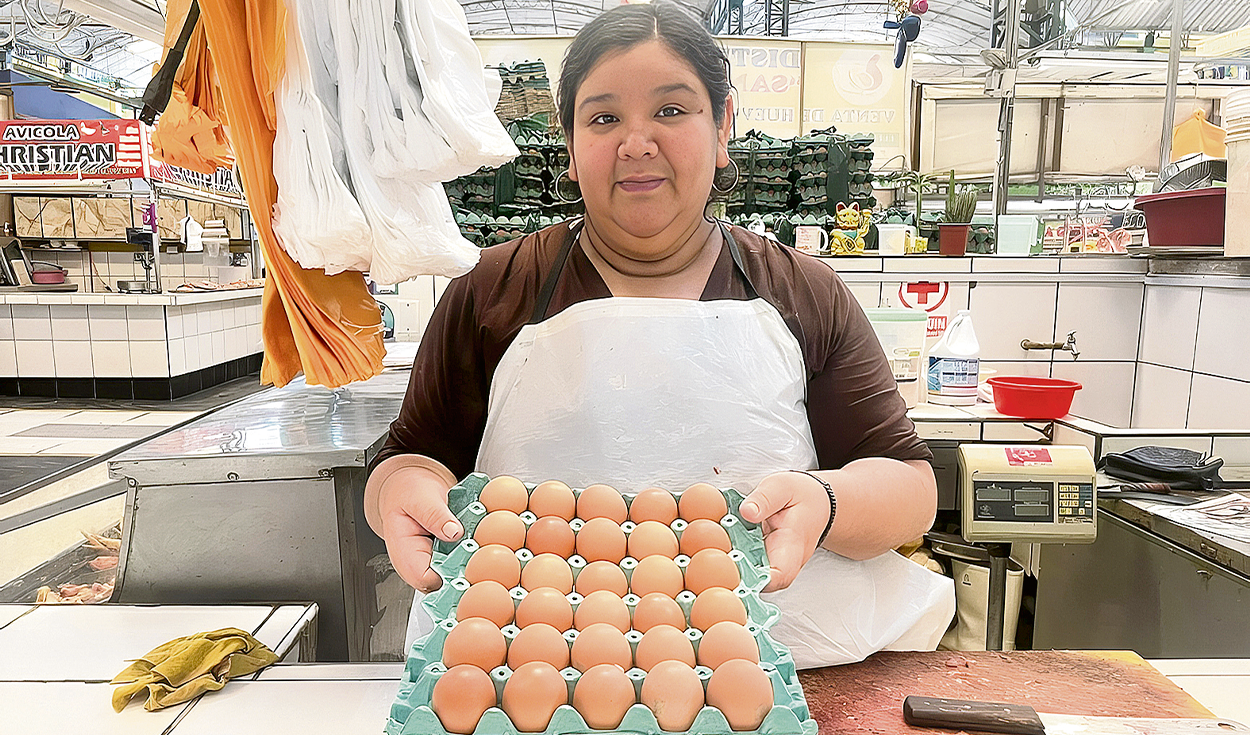
The price of a kilo of eggs in Metropolitan Lima has registered an increase of S/1.21 in the last month, according to the Supply and Price System (SISAP) of the Ministry of Agrarian Development and Irrigation (Midagri). As of January 17, at the retail level, it was at S/7.15 on average, while on last Friday, February 16, its price was at S/8.36.
During the first month of the year the egg has been offered for over S/7.00, with one exception, on Wednesday the 3rd of said month it reached S/6.87.
Then, at the beginning of February, its price has been climbing day after day and this Monday it is offered, on average, at S/8.41, its highest level so far this year. Although in some markets its price already reaches S/9.00, according to a tour carried out by a team from La República.
For Pedro José de Zavala, secretary of the Peruvian Poultry Association (APA), the price of eggs is “normalizing”, since in December and January the consumption of this product is not a priority for families. “To the extent that egg production is maintained, demand drops, so the price falls,” he explains.
In this way, the increases registered in recent days respond to a variation in consumption, since this food is usually purchased more in relation to the start of classes; Thus, its peak could be reached at the end of March or beginning of April, reveals the specialist.
If we review figures for 2023, the first time that a kilo of eggs reaches S/10.00 is on March 27, and it remains at this level until mid-August.
Scope of bird flu
However, De Zavala also specifies that another factor behind the increase would be related to the fact that today the number of breeding hens is lower compared to previous years due to the impact of avian flu. There is little incentive for producers to buy more for the cost of the vaccine, he acknowledges.
Therefore, it warns that as the weeks go by and demand begins to increase, there may not be enough supply. For the representative of La Calera, it is difficult to calculate how much will be missing since 60% of this market is informal but it could be close to 5%.
Chicken also rebounds
On the other hand, a kilo of whole chicken is offered for up to S/10.50, that is, S/2 more than what it cost last week in retail markets in the capital, according to what this media learned.
While SISAP, as of February 19, records that the cost of this bird is S/11.67 per kilo, also its highest price so far in 2024.
Christian Garay, director of Statistics, Monitoring and Evaluation of Policies at Midagri, maintains that this increase responds to “strictly seasonal factors”, since with the heat wave there has been a lower entry of this meat to the collection centers. “We believe that the price of chicken will begin to drop, in line with the normalization of temperatures,” he said.
Regarding other foods, Garay noted that of the 51 foods that Midagri monitors, today’s value is 21% below the value that that basket registered at the beginning of last year. For this reason, he stressed that “we cannot talk about a general increase in food prices.”
Thus we have that the red onion is at S/3.93, S/1.48 more than at the beginning of the year; bagged lemon at S/3.75 (S/0.33 less); the yellow potato at S/5.33 (S/0.79 less); and other foods such as tomatoes (S/3.48) remain stable, according to SISAP.
Data
- Stocked. Yesterday, a total of 9,061 tons of fruits and vegetables arrived at the Great Wholesale Market of Lima and Fruit Market No. 2, according to Midagri.
- Offer. The price of carrots is S/0.40, yellow sweet potatoes are S/0.54, and regular apples are S/0.97.
Source: Larepublica
Alia is a professional author and journalist, working at 247 news agency. She writes on various topics from economy news to general interest pieces, providing readers with relevant and informative content. With years of experience, she brings a unique perspective and in-depth analysis to her work.












